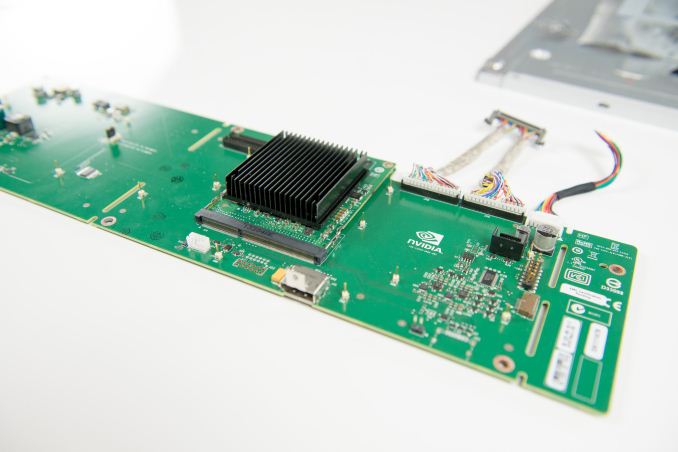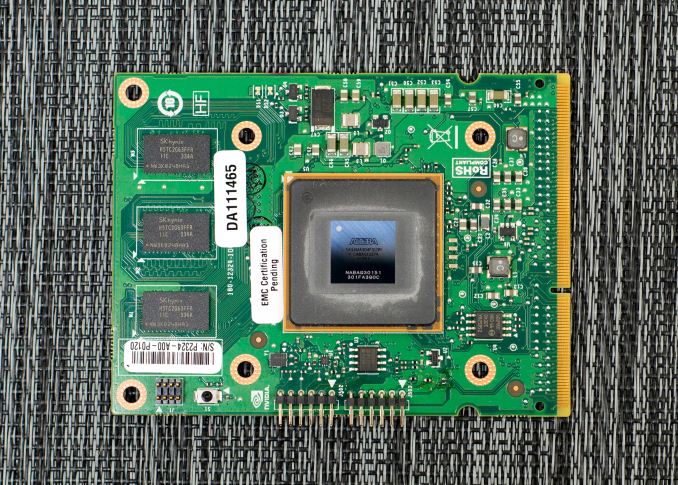NVIDIA G-Sync Review
by Anand Lal Shimpi on December 12, 2013 9:00 AM ESTFinal Words
After spending a few days with G-Sync, I’m just as convinced as I was in Montreal. The technology, albeit a relatively simple manipulation of display timing, is a key ingredient in delivering a substantially better gaming experience.
In pathological cases the impact can be shocking, particularly if you’re coming from a 60Hz panel today (with or without v-sync). The smoothness afforded by G-Sync is just awesome. I didn’t even realize how much of the v-sync related stutter I had simply come to accept. I’d frequently find a scene that stuttered a lot with v-sync enabled and approach it fully expecting G-Sync to somehow fail at smoothing things out this time. I always came away impressed. G-Sync also lowered my minimum frame rate requirement to not be distracted by stuttering. Dropping below 30 fps is still bothersome, but in all of the games I tested as long as I could keep frame rates north of 35 fps the overall experience was great.
In many situations the impact of G-Sync can be subtle. If you’re not overly bothered by tearing or are ok with v-sync stuttering, there’s really nothing G-Sync can offer you. There’s also the fact that G-Sync optimizes for a situation that may or may not be so visible 100% of the time. Unlike moving to a higher resolution or increasing quality settings, G-Sync’s value is best realized in specific scenarios where there’s a lot of frame rate variability - particularly between 30 and 60 fps. Staying in that sweet spot is tougher to do on a 1080p panel, especially if you’ve already invested in a pretty fast video card.
If you’re already running games at a fairly constant 60 fps, what G-Sync will allow you to do is to crank up quality levels even more without significantly reducing the smoothness of your experience. I feel like G-Sync will be of even more importance with higher resolution displays where it’s a lot harder to maintain 60 fps. Ideally I’d love to see a 2560 x 1440 G-Sync display with an IPS panel that maybe even ships properly calibrated from the factory. I suspect we’ll at least get the former.
There's also what happens if game developers can assume the world is running on displays with variable refresh rates. All of the sudden targeting frame rates between 30 and 60 fps becomes far less of a tradeoff.
NVIDIA hasn’t disclosed much about G-Sync pricing, although ASUS has already given us a little guidance. The VG248QE currently sells for $280 on Newegg, while the upcoming G-Sync enabled flavor will apparently be sold for $400. The $120 premium can be a tough pill to swallow. A 40% increase in display cost is steep, which is another reason why I feel like NVIDIA might have a little more success pushing G-Sync as a part of a higher end display. On the flip side NVIDIA could easily get those costs down by migrating from an FPGA to an ASIC, although to justify that move we’d have to see pretty broad adoption of G-Sync.
Some system integrators will be selling the aftermarket upgraded VG248QE between now and CES, but you can expect other displays to be announced over the coming months. NVIDIA still hasn't figured out if/how it wants to handle end user upgrades for those who already own VG248QE displays.
I feel like NVIDIA is slowly but surely assembling a bunch of components of a truly next-generation gaming experience. With all of the new consoles launched, the bar is set for the next several years. PCs already exceed what consoles are capable of in terms of performance, but the focus going forward really needs to be on improving ease of use as well as the rest of the experience. Things like GeForce Experience are a step in the right direction, but they need far more polish and honestly, integration into something like Steam. G-Sync just adds to the list. For PC gaming to continue to thrive, it needs to evolve into something even more polished than it is today. It’s not enough to just offer higher resolution and a better looking image than what you can get on other platforms, it’s very important to provide a smoother and more consistent experience as well. G-Sync attempts to and succeeds at doing just that.
With G-Sync enabled, I began to expect/demand more visually from my games. Aliasing and other rendering imperfections were far more pronounced now that a big portion of stuttering was removed. G-Sync isn't the final solution, but rather the first on a long list of things that need improving. There are other use cases for G-Sync outside of gaming as well. Streaming video where bandwidth constraints force a variable frame rate is another one I’ve heard passed around.
Although G-Sync is limited to NVIDIA hardware (GeForce GTX 650 Ti Boost or greater), the implementation seems simple enough that other manufacturers should be able to do something similar. That’s obviously the biggest issue with what we have here today - it only works with NVIDIA hardware. For die hard NVIDIA fans, I can absolutely see a G-Sync monitor as being a worthy investment. You might just want to wait for some more displays to hit the market first.












193 Comments
View All Comments
JimmiG - Thursday, December 12, 2013 - link
What about Triple Buffering? Seems we already have a solution to this problem in software..tipoo - Thursday, December 12, 2013 - link
Stutter/lag.NicePants42 - Thursday, December 12, 2013 - link
I came here to post this, and am quite surprised that there was no mention of triple buffering in the article. It seems very disingenuous on the part of both nVidia (assuming there were no slides mentioning triple buffering) and Anandtech to omit this issue.In fact, it was Anandtech who did an excellent (IMHO) job of informing me about the advantages of triple buffering back in 2009, in this article: http://www.anandtech.com/show/2794/2
I'm glad nVidia is bringing more hardware solutions to improve gaming, but not addressing triple buffering here makes me think that nVidia's marketing department wasn't impressed with the comparison.
What gives, Anand?
Zink - Thursday, December 12, 2013 - link
Triple buffering is a type of v-sync. On the first page of this review it explains the issue. The buffers hold on to what the GPU rendered for anywhere from 0 ms to 17 ms so there is no way for the rate of motion of objects in the frames from the GPU to actually match up with when the frames are displayed.PEJUman - Thursday, December 12, 2013 - link
My thoughts exactly, triple buffering is a software solution, while this is a hardware based solution. If I understand correctly, the input lag for both should be the very similar. The distinction comes from the memory requirements; on already taxed hardware (think 4K), G-sync would work better.ultimately, Unless Nvidia can get the G-sync compatible LCDs under ~$30 premium, it (G-sync) will only make sense for ultra high 4K monitors; If you have middle of the road stuff, your money is better spent into better GPU imho.
Traciatim - Thursday, December 12, 2013 - link
Triple Buffering causes lag, since you never get to see anything that happens in the game until the third frame is scanned on the screen. That's a pretty huge deal when you are playing games where reflexes affect the outcomes. If you get a chance to react up to 33ms faster than the next player, all else being equal you win.JimmiG - Friday, December 13, 2013 - link
Of course triple buffering has drawbacks (input lag) just like G-Sync, however it's a perfectly viable solution to the same problem that this hardware+software combination tries to solve. I doubt competitive twitch FPS players are going to jump on G-Sync anyway as it may causes input lag too - they will keep playing with double-buffering + no VSync.With triple-buffering, as long as your actual frame rate is over 60 FPS, there should always be a frame ready in one of the back buffers when the screen redraws. I've always found that in the few games that support it, the frame rate is very even and smooth.
PEJUman - Friday, December 13, 2013 - link
so does G-sync, isn't telling the screen to wait until the next frame is ready = lag? The only difference is G-sync waits for the next frame, buffering grabs the latest finished frame. Both creates extra lag.psuedonymous - Friday, December 13, 2013 - link
Triple-buffering solves the issue when you have performance to spare (i.e. spend most of your time rendering at above the display refresh rate) and a very high tolerance for update delay (lag). When performance constrained, triple-buffering offers little to no benefit over double-buffering (as you're never filling that other buffer before display update), and you still get that frame-by-frame variance between render time and display time when performance varies.oranos - Thursday, December 12, 2013 - link
just because it's niche doesn't mean it's not worth an article.